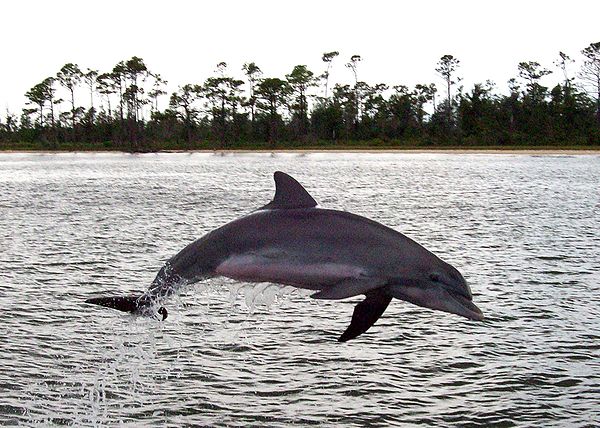The University of Maryland Center for Environmental Science invites everyone who spends time on or near the Chesapeake Bay to report dolphin sightings with a new online tracking system. Chesapeake DolphinWatch allows users to mark the location of their dolphin sightings on a map of the Chesapeake and its tributaries so scientists can better understand where the dolphins are and where they go.

“We’d like to increase people’s awareness of the dolphins and collect data at the same time,” said Helen Bailey, a scientist at the University of Maryland Center for Environmental Science’s Chesapeake Biological Laboratory. She specializes in studying the movements of marine mammals. “Whether you’re at home, whether you have a community pier, you live near the water, or you go out on the water, we need your eyes on the sea telling us where are the dolphins.”
Bottlenose dolphins are frequently spotted in the Chesapeake Bay during the summer with reports of them leaping in the air or bow riding boats. However, very little is known about how often dolphins actually come into the Bay, how long they spend there, what areas of the Bay they are using and why.
“Right now we have such scarce information. This is really the first time we are systematically recording this,” said Bailey. “We are hearing anecdotally that dolphins are becoming more frequent visitors to the Chesapeake Bay, but we really don’t have much information at all about where they are going and when. The more eyes we have on the water the better to report dolphin sightings. We think that citizens can make very good citizen scientists,” she said.
The online tracker has four main sections. There is a map page where users can see all of the reported sightings and tap to report their own sighting. Users can either enter the location where they saw the dolphins or have the device use the current location to mark the sighting. Users will be able to view how many users are accessing the tracker and the dolphin sightings in real time. There is also an information page with responsible wildlife viewing guidelines and to learn more about dolphins and the Chesapeake Bay.
“We are excited to be using new technology that will enable everyone to help us understand more about dolphins,” said Tom Miller, director of UMCES’ Chesapeake Biological Laboratory. “Citizen science, such as the DolphinWatch tracker, is becoming more and more important and helps connect everyone to our work to protect, restore, and sustain the Bay.”
Bailey notes that changes in climate, improvements in water quality, and improvements in fish stocks upon which dolphins feed could be factors in a surge in dolphin sightings. She already has a few underwater microphones in the Patuxent and Potomac Rivers where they meet the Chesapeake Bay listening for the echolocation click sounds dolphins make. The data collected through Chesapeake DolphinWatch will help inform where to put more devices to help understand where the dolphins are going and where are feeding.
“People have been really excited to tell us about their sightings, but there was no easy way to report them before,” said Bailey. “Dolphins are very iconic, and they are in our backyard.”
More information on the DolphinWatch program is available on the UMCES website. Tag your photos of dolphins to @dolphinwatch_cb on Instagram.
Funding for ChesapeakeDolphinWatch.org was provided by the Chesapeake Bay Trust.




